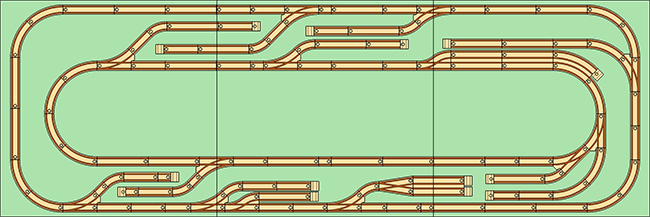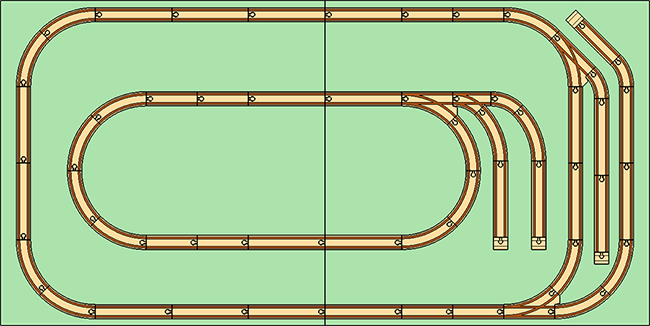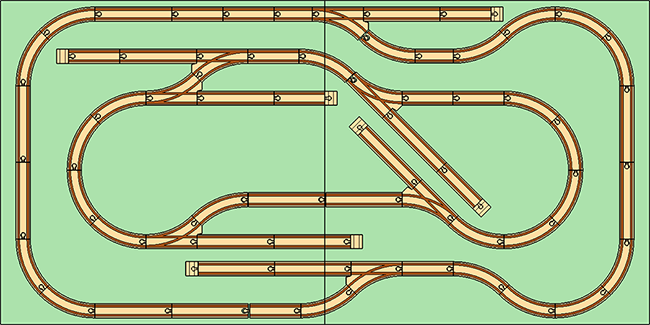You can easily incorporate sidings into the basic loops, and you have three basic options.
In between loops
The first option is to place them within the space between the inner and outer loops. The image below shows the large number of siding configurations that can be achieved, and this is just a start. Of course, this would not be an actual layout since the two loops do not connect. The point here is to show what configurations are possible, and where.

Having nested sidings in between the two loops maximizes the use of the space by increasing the track density. An individual siding is much longer than it is deep, so nesting and layering can make use of what would otherwise be wasted space. These formations also result in a more visually interesting layout.
At loop ends
By shortening the loops on either side you can make room for sidings outside the loop ends, some of which can be quite lengthy. This technique is a good starting point for building yards.

At turns
Anywhere you place an E you can potentially use an L or an M to build a siding that branches straight from the main line. The same goes for E1, which can potentially be replaced with O, O1, P, or P1. By breaking up long runs of straight track with curves you create additional siding options, and more exciting railways.
